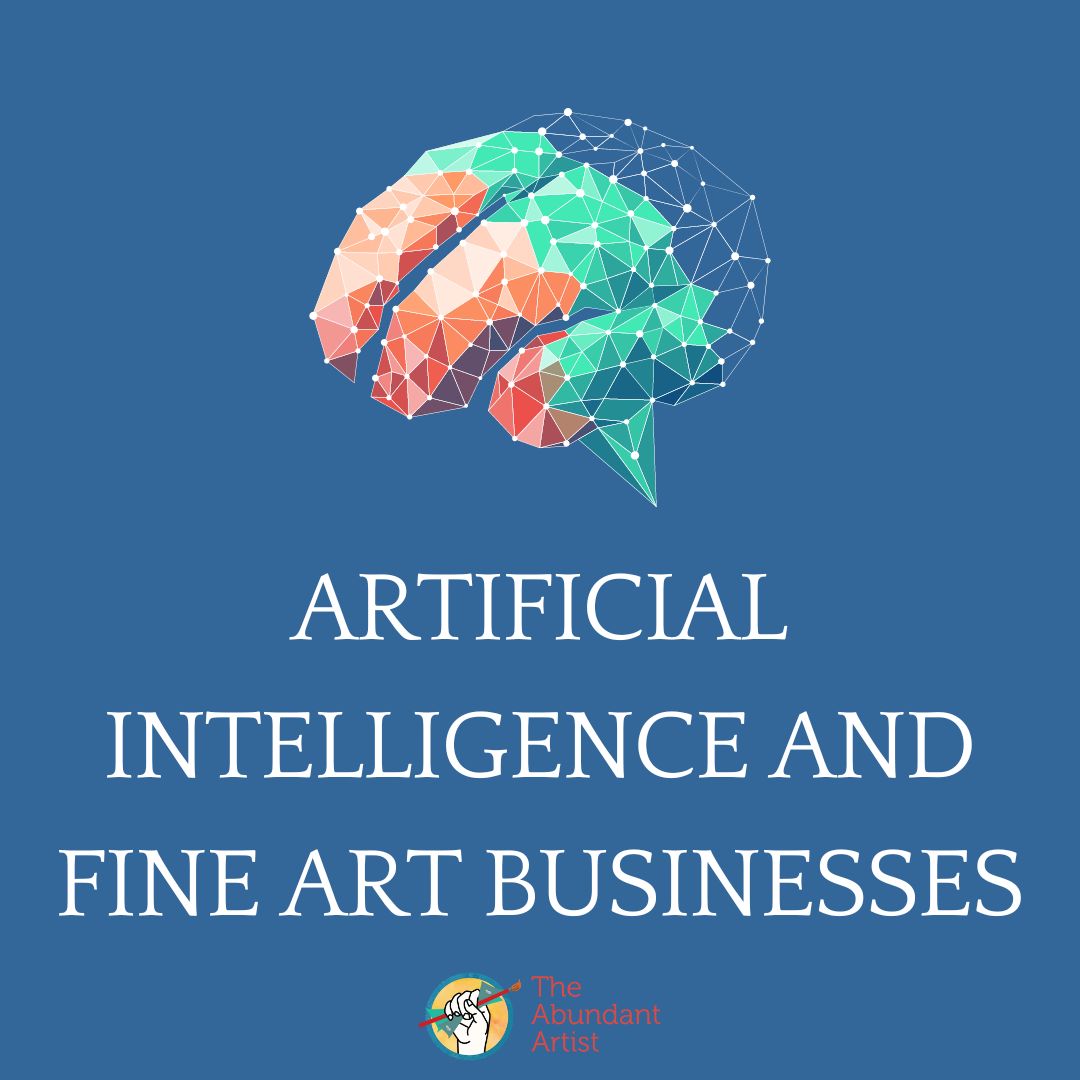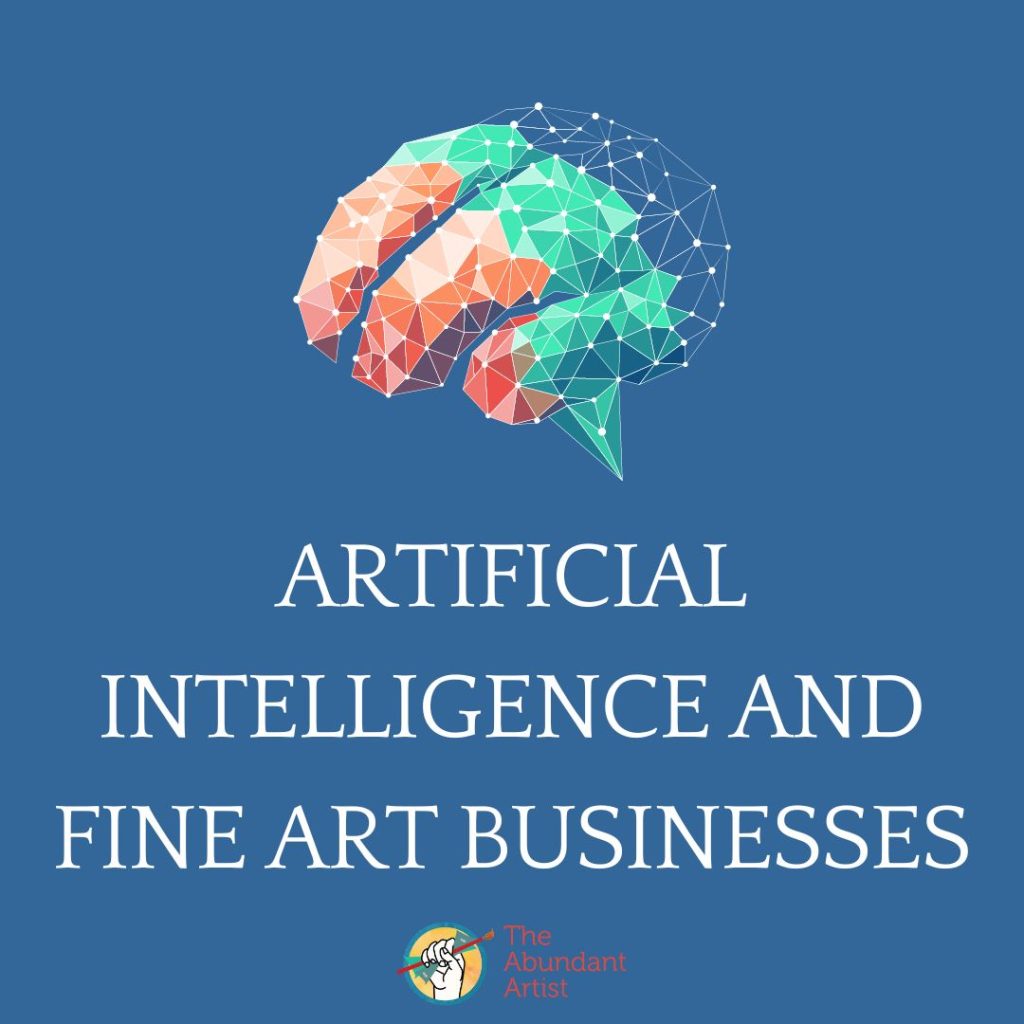
Artificial Intelligence and Fine Art Business: What Do We Do Now? – How to Sell Art Online
AI is eating and reinventing the Internet.
Right around the time I started TAA I was working at a tech startup that built tools to help large companies manage large amounts of data. We built the infrastructure that enabled Single Sign On (SSO) – users logging into one website with their identity from another website. Typically Google, Facebook, or a similarly large company.
My job was to work with these large companies to figure out what to do with all of the data that came with those identities. For example, Google knows your name, email address, birthday, and what kinds of things you typically browse on the Internet. Facebook knows who your friends are and what kinds of things you like to post about. It’s possible to use machine learning (what we now call Artificial Intelligence or AI) to analyze all of this information and figure out what kind of things to show you so that you’ll click, surf, and ultimately buy more from any particular company.
I worked with companies to figure out where to put that data, how to acquire it, and how to figure out what’s relevant to their business.
It’s been more than a decade since that first tech startup job and companies are just now starting to truly realize the level of personalization that we were talking about back then. If you go to sites like Amazon, Facebook, or Youtube you’re probably used to seeing things you know and like as soon as the website loads.
And that’s just the beginning.
Most people have no idea how much of their lives is already personalized in this way, from airline tickets to Youtube suggestions to AI-generated fast food ordering.
In the case of fine artists, it’s already reached a point of existential dread.
Artists are suing AI companies over copyright claims, finding ways to mess with the training datasets. At the same time, the genie is already out of the bottle. My dungeons and dragons group uses AI to create character sketches and render scenes from our game sessions. A quick glance at places like r/ChatGPT will show endless ‘subject X but make it more Y‘ posts.
For an individual artist who is trying to make a living from their work, what are they to do?
There’s certainly no easy answers, but here are a few things to try.

Embrace the AI-Assisted Creative Process
Consider embracing AI to enhance your creative process. Experiment with AI-generated sketches or scenes to complement your artistic vision. Leverage these technologies to spark inspiration and elevate your work, while maintaining your unique artistic voice. You can also use AI to create essential texts accompanying your artwork, like a description, an artist’s statement or your bio. Miriam Schulman did a podcast interview with Steve Hoffman on how AI is influencing the future of creativity and explored 14 Ways to Use ChatGPT to Grow Your Art Business with Jen Lehner.
AI can be very powerful for ideation, conceptualization, and early sketches. Tools like Dall-E and Midjourney are very useful for iterating on textures and colors even when they lack any vision of their own.
Educate Yourself on AI Copyright Protection
Take proactive steps to educate yourself on AI-related copyright issues. Friend of TAA Kiffanie Stahle has some great resources on copyright. Familiarize yourself with the most important and latest developments in AI and copyright law. Artsy publishes regular articles, including 6 Artists Who Were Using AI Before ChatGPT, and a piece that is fascinating for when it was published, Christie’s will sell an artwork created by artificial intelligence for the first time, published in 2018. The Christie’s piece sold for $432K. Oh, but wait, there’s more to the story and it turns out the piece wasn’t simply ‘made by AI’ and was in fact generated from a huge collection of art that was curated by hand and hand-edited after the image was generated.
Explore available tools and strategies to protect your original creations from unauthorized use, ensuring you retain control over your artistic output.
Use LLMs for Narrative Creation and Writing
AI tools like ChatGPT are terrible out of the box, but using Custom Instructions and your own writing samples can powerfully enhance the speed you’re able to write about your art, create artist statement, generate social media captions, and other ideas. Simply telling ChatGPT to give you 10 ideas for social media posts about your art is a good way to start, as long as you’re willing to iterate on it and make some final edits.
Stand Out by Being (More) Yourself
In the era of personalized content, having a robust, solid, online presence is crucial. Ensure your artwork is showcased on platforms like Instagram and other relevant sites, and curate your online portfolio (your website) to reflect who you really are. Optimize your website for discoverability and engage with your audience through social media.
What else?
How are you using AI tools in your art creation or art business practice? I’d love to hear from you in the comments or over on social.